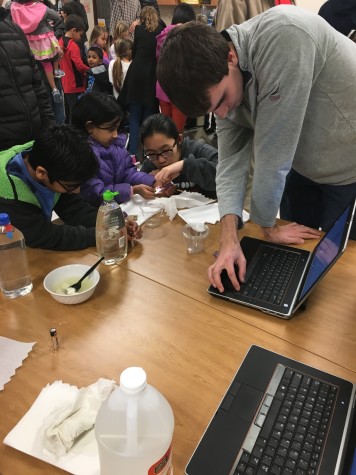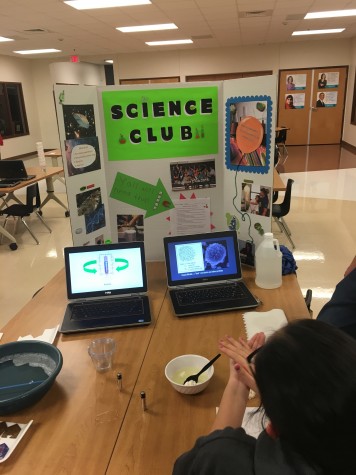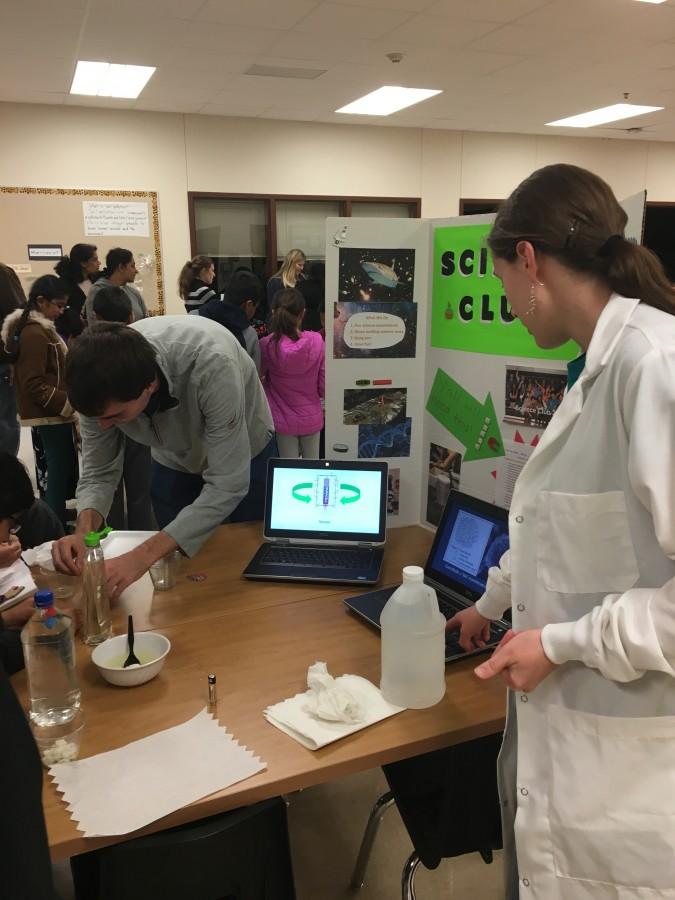Science Club Demonstrates Experiments at Elementary School
January 22, 2016
On the evening of Thursday, Jan. 21, science experiments bubbled all around Elsa England Elementary school. Young kids and their parents gathered for the Elsa England Science Night.
The Westwood Science Club officers were given the opportunity to attend this event and bring along some of their favorite and best science experiments.
“I thought it was surprising that so many adults  expressed interest in the experiments,” Science Club President Tatiana Larina ‘16 said. “These were aimed a little lower towards children, but when explained in higher-level terms to adults the topic elicited a lot of unexpected interest. Especially the milk one.”
expressed interest in the experiments,” Science Club President Tatiana Larina ‘16 said. “These were aimed a little lower towards children, but when explained in higher-level terms to adults the topic elicited a lot of unexpected interest. Especially the milk one.”
The officers showed off their scientific abilities with experiments like plastic milk, homopolar motors, and a soap powered model boat.
“My personal favorite was the plastic milk simply because it had a ‘wow’ factor from almost everyone that came to listen,” Larina said.
Plastic milk is a mixture made from warmed up milk and vinegar. When the vinegar touches the milk, the protein in the milk forms links that entangle with each other. The naked eye cannot see this process because it is happening at a microscopic level, but if you were to stir the two ingredients together, we would eventually see a ball or clump form into what we call “plastic milk”.
 As for the homopolar motors, they are magnetic field motors that are powered when you attach strong magnets to the negative side of a battery and shape a stripped copper coil into a rectangular form. This rectangular form has a loop at the top of it with even amounts of wire on each side for balance. The bottom wire is then shaped to fit around the magnets to where they are neither touching, nor too far away from the magnets, while touching each other. You place the loop of the wire on the positive side of the battery and the copper wire spins around until it either falls off or it is forced to stop.
As for the homopolar motors, they are magnetic field motors that are powered when you attach strong magnets to the negative side of a battery and shape a stripped copper coil into a rectangular form. This rectangular form has a loop at the top of it with even amounts of wire on each side for balance. The bottom wire is then shaped to fit around the magnets to where they are neither touching, nor too far away from the magnets, while touching each other. You place the loop of the wire on the positive side of the battery and the copper wire spins around until it either falls off or it is forced to stop.
The soap powered boat is a hands on experiment where you cut out a boat shape with a triangle cut out at the straight end of it. Then you use a toothpick to wipe a little bit of soap (preferably dawn soap because it is a strong soap) on the inner side of the cut out triangle. After you have done that, you can place it in a pool of water- not too deep- and watch it move all on it’s own!
“I had chosen the experiments because of general ease of understanding of the sometime complex principles behind them,” Larina ‘16 later said.
These experiments not only taught the children about different forms of science, but they also encountered the fun side of the science world that is engaging and hands-on.
If you want to try some cool, simple experiments at home, you can visit: https://sciencebob.com



